Compressible Flow in 3-D Convergent-Divergent Nozzle
$80.00 $40.00 Student Discount
- The problem numerically simulates Compressible Flow in a 3-D Convergent-Divergent Nozzle using ANSYS Fluent software.
- We design the 3-D model by the Design Modeler software.
- We Mesh the model by ANSYS Meshing software, and the element number equals 898906.
- We use the Ideal Gas option for air density to define the Compressible flow.
To Order Your Project or benefit from a CFD consultation, contact our experts via email (info@mr-cfd.com), online support tab, or WhatsApp at +44 7443 197273.
There are some Free Products to check our service quality.
If you want the training video in another language instead of English, ask it via info@mr-cfd.com after you buy the product.
Description
Compressible Flow in a 3-D Convergent-Divergent Nozzle, ANSYS Fluent CFD Simulation Training
The problem simulates Compressible Flow in a 3-D Convergent-Divergent Nozzle using ANSYS Fluent software. We perform this CFD project and investigate it by CFD analysis.
A de Laval nozzle (convergent-divergent nozzle, CD nozzle, or con-di nozzle) is a tube pinched in the middle, making a carefully balanced, asymmetric hourglass shape.
It is used to accelerate a hot, pressurized gas passing through it to a higher supersonic speed in the axial (thrust) direction by converting the heat energy of the flow into kinetic energy. Because of this, the nozzle is widely used in some types of steam turbines and rocket engine nozzles.
In this project, the airflow will enter the convergent-divergent nozzle with a pressure of 70 bars and a Mach number of 0.2 with a temperature of 2735 K. After passing the throat zone; the airflow will gain speed and lose its temperature as it passes through the diffuser.
The geometry of this model is designed in Design Modeler and meshed in ANSYS Meshing®.
The mesh type used for this geometry is unstructured and has great accuracy in sensitive sections. Also, the element number is 898906
Convergent-Divergent Nozzle Methodology
The Energy Equation is activated due to the compressible flow, and the ideal gas equation is exploited to calculate the density changes in the computational domain.
Convergent-Divergent Nozzle Conclusion
The contours of pressure, temperature, velocity, Mach number, etc., are presented. As it is clear from the contours, the airflow loses its heat after passing through the nozzle opening. It increases its speed as the nozzle opening becomes more extensive than before (in the divergent section), and the volume of passing air increases.
Due to the constant air mass, its density decreases, so according to the continuity law, the velocity increases along with the nozzle. As seen from the Mach contour, the Mach number in the nozzle throat, according to the design mode, is equal to one and then increases in the nozzle’s divergent part.
The Mach number distribution is not uniform in this section due to the nozzle geometry lines’ fracture. However, it has its maximum value at the nozzle output, i.e., where the pressure is precisely at its minimum. There is a border point separation point downstream of the throat. Normal shock also occurred in the throat.
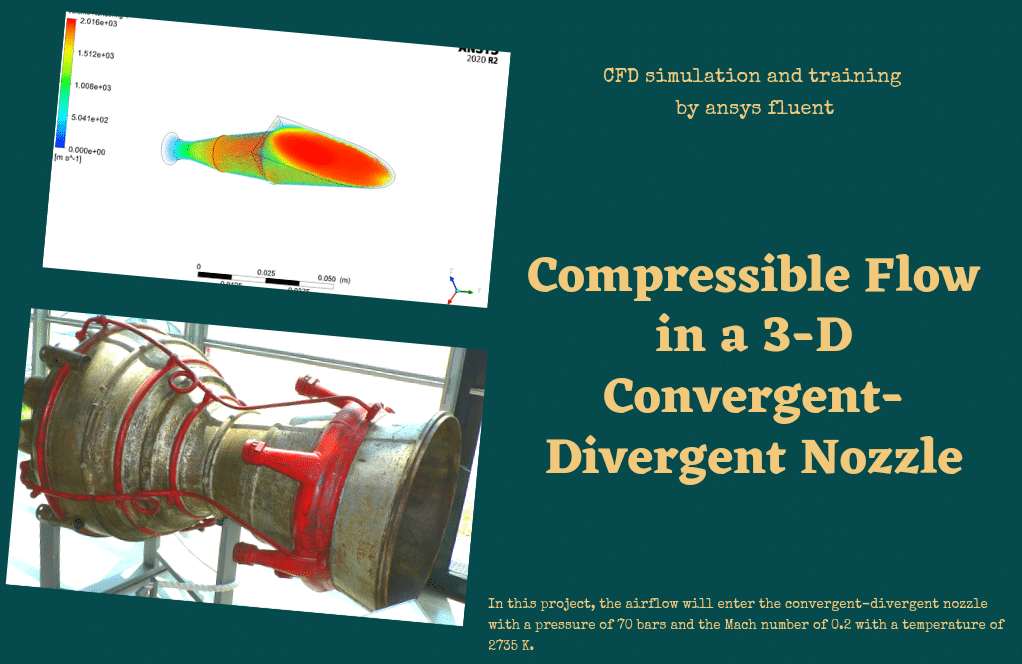
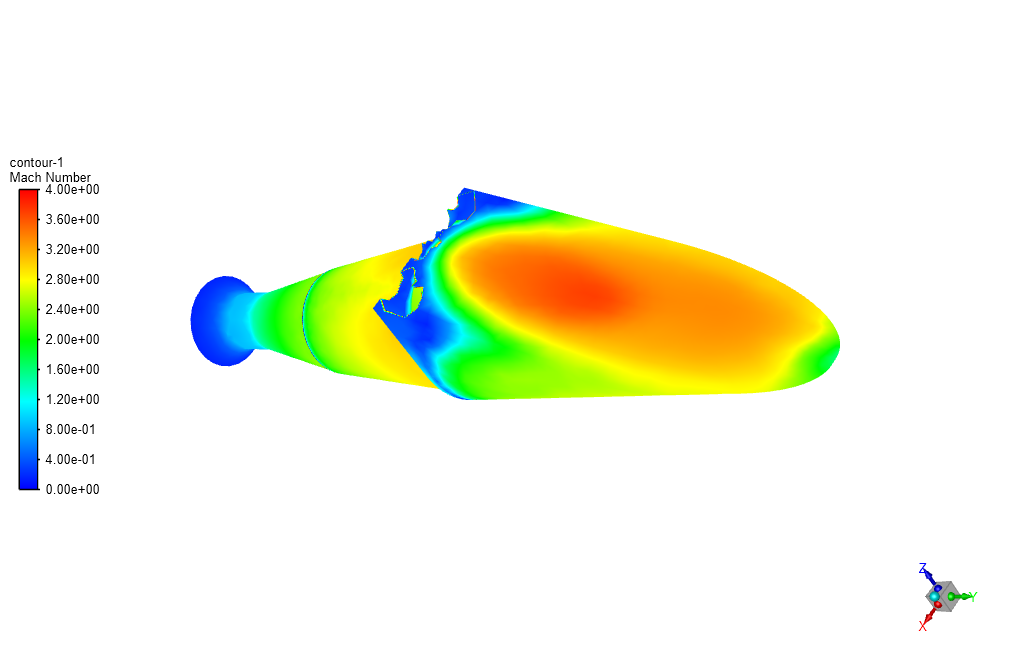
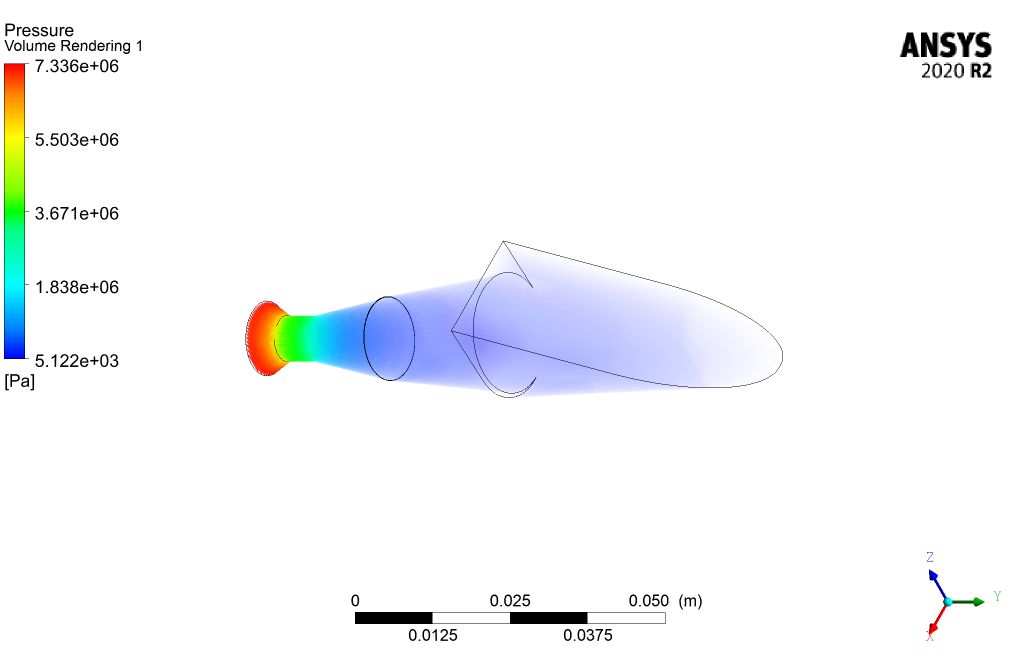
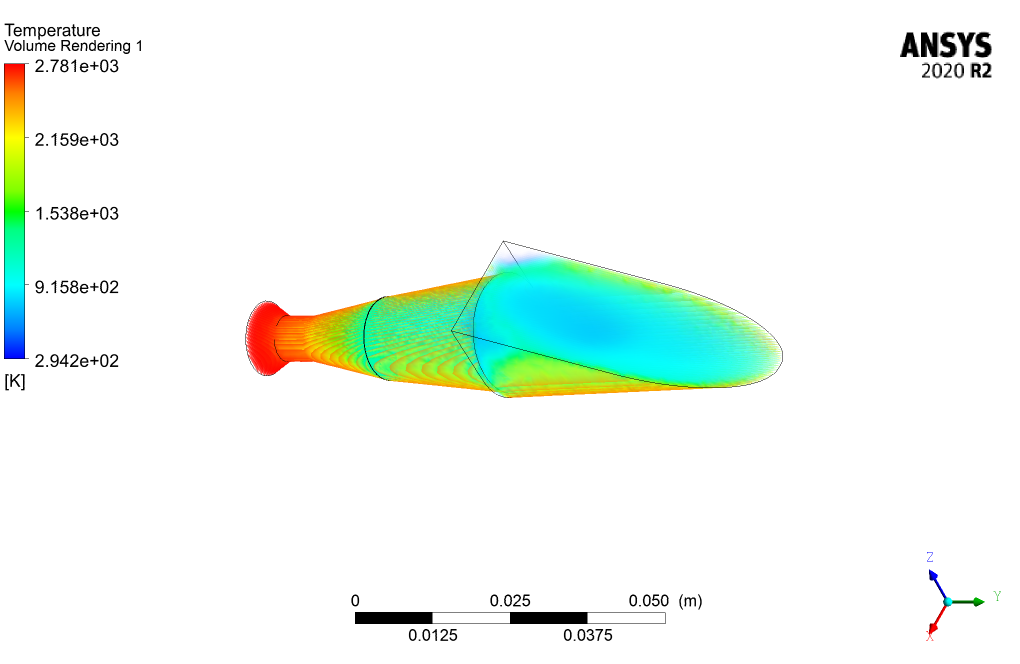
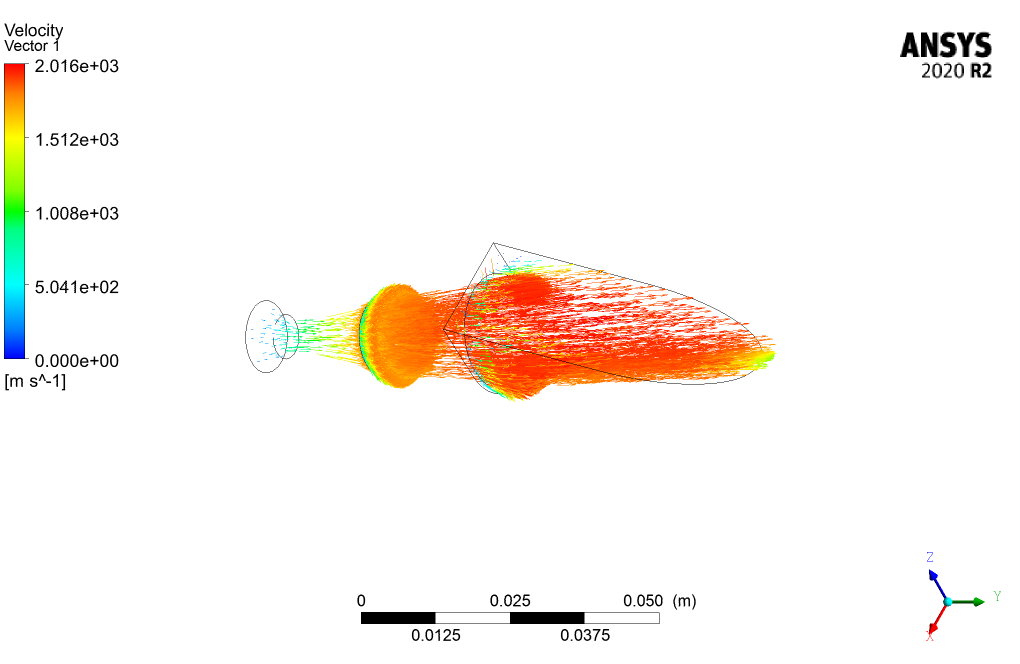

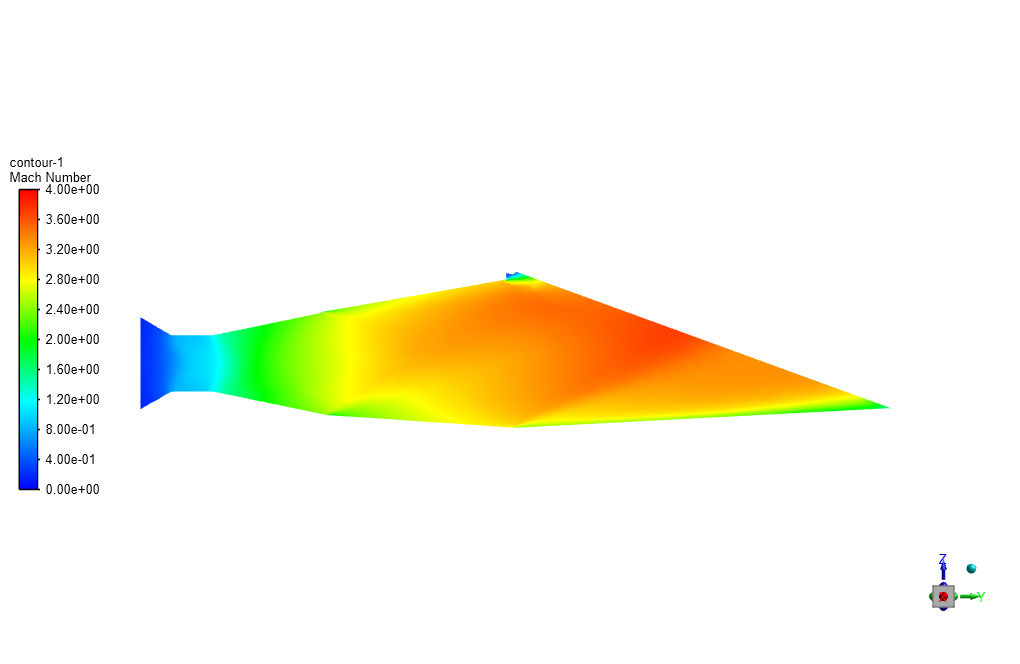
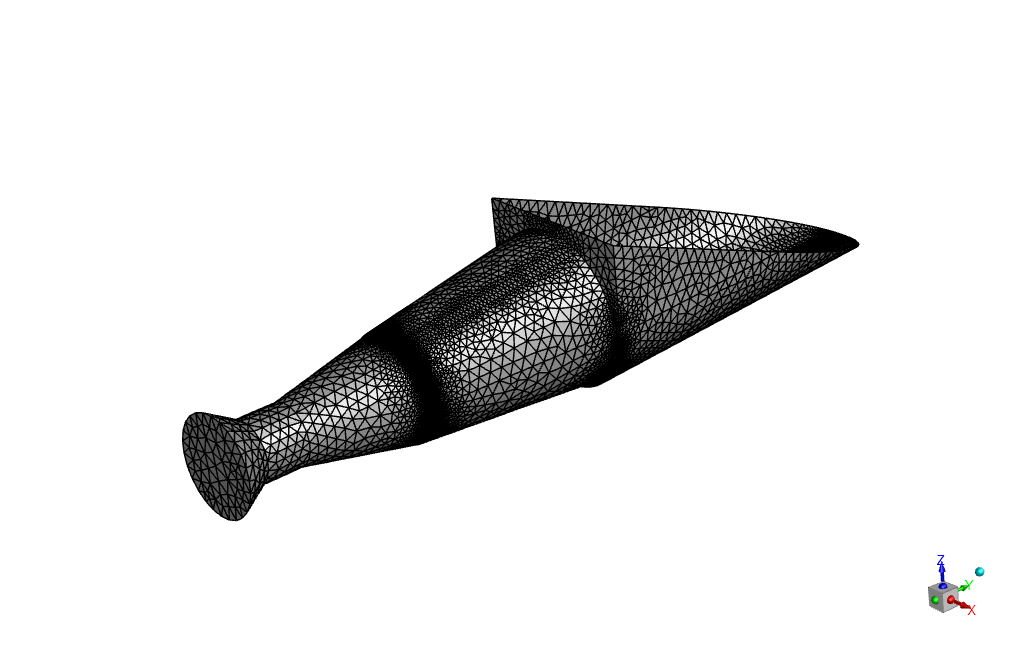
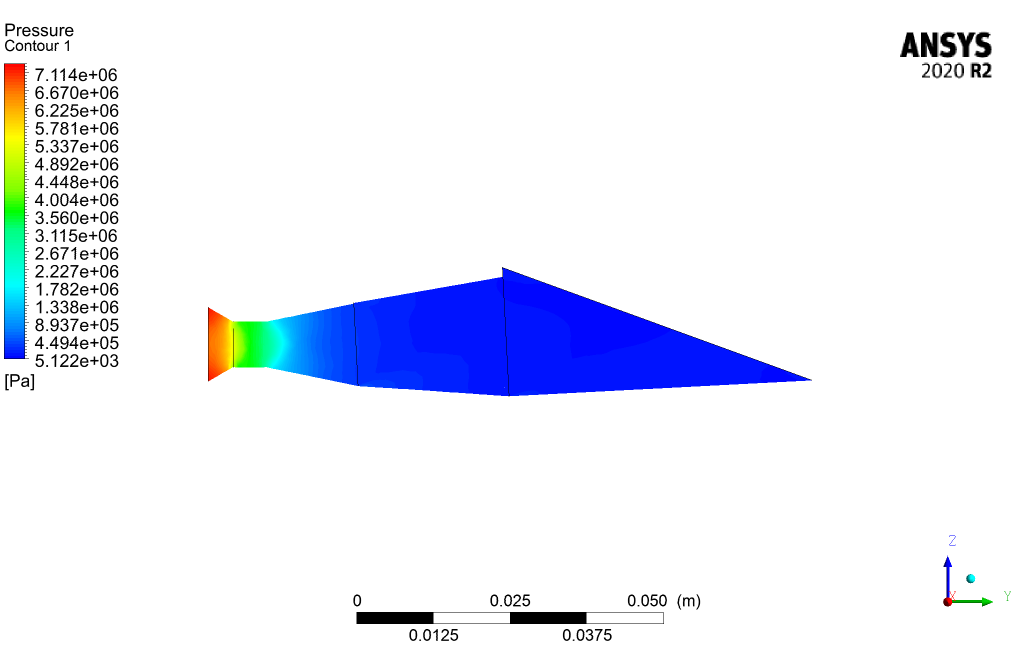
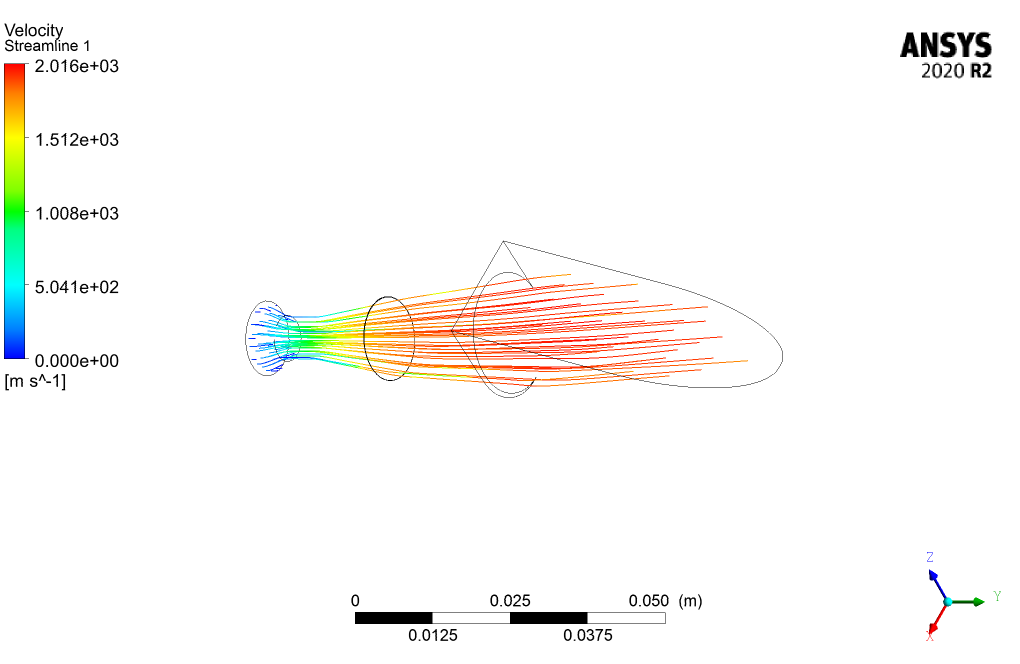

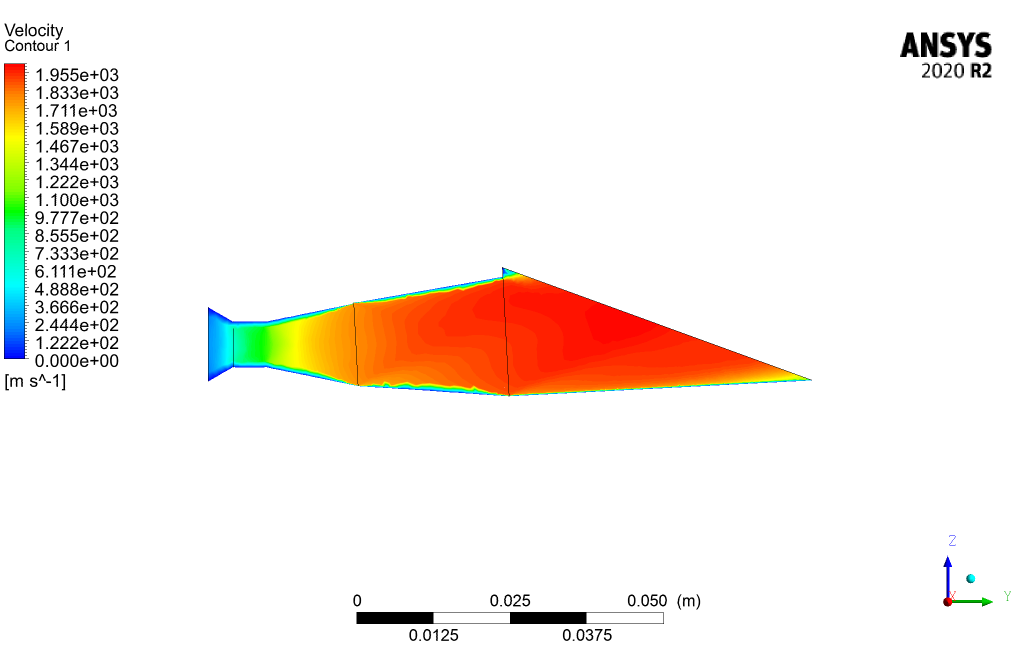
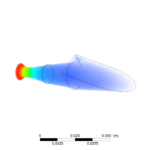



Manuel Rutherford III –
what a nice mesh, great
Adaline Grimes –
Hi, great video
Sherman Upton –
This compressible flow simulation sounds impressive! The detailed explanation of how the gas expands and accelerates through the nozzle highlights the dynamic capabilities of ANSYS Fluent in modeling high-speed aerodynamics. Great job on successfully simulating the complex behavior of compressible flow within a CD nozzle and providing insights into the pressure, temperature, and Mach number distributions.
MR CFD Support –
Thank you for your positive feedback! We are thrilled to hear that you found our simulation on the Compressible Flow in a 3-D Convergent-Divergent Nozzle both impressive and informative. It is our goal to provide detailed and accurate simulations that help enhance understanding in aerodynamics and fluid dynamics. We appreciate your recognition of the capabilities of ANSYS Fluent in this challenging application. If you have any more questions or need further information about other simulations, please feel free to reach out.
Alexa Schiller –
The level of detail in the description of the flow through the nozzle is fantastic! I really appreciated the thorough explanation of how the gas dynamics change from the convergent to the divergent section and how the geometry influences the overall flow, especially the Mach number behavior and the presence of shock. The use of an unstructured mesh to capture the intricacies of the flow pattern is impressive. Great work!
MR CFD Support –
Thank you so much for your kind words! We are delighted to hear that the description of the flow dynamics in the Compressible Flow in a 3-D Convergent-Divergent Nozzle simulation was insightful and that the mesh choice met your expectations. Our goal is always to provide detailed and professional results. Your feedback is truly appreciated!
Emmanuelle Blanda –
The review beautifully summarises the complex physics and results of the simulation. Very fascinating how the Mach number and temperature behavior across the nozzle were detailed in the findings.
MR CFD Support –
Thank you for your positive feedback. It’s encouraging to know the details of the Mach number and temperature behavior were appreciated and well understood from our representation. If you have any further questions or need more information, please feel free to reach out!
Reginald Hegmann –
I was fascinated by the simulation’s ability to predict temperature changes through the nozzle. Could there be a way to tweak the model to enhance the heat transfer accuracy further?
MR CFD Support –
To enhance the heat transfer accuracy within the model, you could refine the mesh around areas where thermal gradients are expected to be high. Additionally, using higher-order discretization schemes for energy equations or incorporating more advanced turbulence models and including radiation effects (if applicable) can also improve predictive accuracy.
Manuel Little PhD –
I am absolutely impressed with the level of detail in the CFD simulation of the compressible flow within the convergent-divergent nozzle. The results such as the Mach number distribution and the observation of normal shock phenomena in the throat provided vital insights that are crucial for practical applications in propulsion and turbo-machinery design. Your work thoroughly covers the critical aspects of flow dynamics in such complex geometries.
MR CFD Support –
Thank you for your positive feedback! We are glad to hear that the simulation’s detailed results have provided you with the insights you need for your applications. It is rewarding to know that our dedication to detailing and accuracy in modeling complex flow dynamics is appreciated and valuable to our users. If you require further information or assistance with similar simulations, please don’t hesitate to contact us.
Joel Keeling –
Can I get shock wave plot in results??
MR CFD Support –
Hi, you have to plot the Mach Number or Velocity.
Roxanne Hintz –
Which resources can help me further understand the physics behind normal shock and its occurrence within the divergent part of the nozzle?
MR CFD Support –
To understand the physics behind normal shock and its occurrence in a divergent nozzle section, you can refer to textbooks on fluid dynamics and gas dynamics, which cover shock wave theory in detail. Additionally, scholarly articles on nozzle flow and CFD simulations can provide practical examples and deep insights into how normal shocks are captured in simulations like the one with the convergent-divergent nozzle. Helpful resources often include ‘Fundamentals of Aerodynamics’ by John D. Anderson and ‘Gas Dynamics’ by E. Rathakrishnan. Furthermore, some universities provide open course materials online, which could be an excellent resource for expanding your knowledge in this area. ANSYS Fluent’s own documentation and user guides can perfectly answer how a normal shock would be handled in simulations.
Ephraim Steuber DDS –
Does this training cover how to set up the simulation to capture the shockwave within the nozzle and the subsequent separation due to the shock?
MR CFD Support –
Yes, the training includes instruction on setting up the simulation to accurately capture the shockwave phenomena within the convergent-divergent nozzle, as well as the subsequent flow separation that can occur due to the presence of the shock.
Melyssa Okuneva –
I saw that ANSYS Fluent was used for simulating. Was the conservation of mass checked after simulation to ensure accuracy in the results?
MR CFD Support –
In simulations using ANSYS Fluent, conservation principles, including mass conservation, are inherently considered in the solver algorithms. After simulation, checking the mass flow rate at the inlet and outlet boundaries can verify mass conservation. This ensures that the mass is not artificially lost or gained within the computational domain, thus maintaining accuracy in the results.
Cristian Bosco V –
I’m impressed with how the simulation of compressible flow manages the transition through various phases in the nozzle. I’m curious about the shockwave; how is the normal shock captured in the simulation, and does the mesh need to be refined around this phenomenon?
MR CFD Support –
In the simulation, capturing the normal shock within the nozzle’s throat area requires the mesh to have a high level of refinement to accurately resolve the steep gradient in flow properties. An unstructured mesh allows for increased mesh density in critical areas like the shockwave, ensuring that the simulation can model it with high fidelity. Adaptive mesh refinements may also be utilized to improve the mesh locally as the simulation progresses and the shockwave is identified.
Celia Mertz –
I’m truly impressed with how the simulation handles the complex thermal and velocity gradients in the nozzle. The thoughtfully crafted mesh appears to have worked wonderfully to capture the necessary intricacies of the airflow.
MR CFD Support –
Thank you for your kind words! We always strive to carefully construct our meshes to ensure precise simulations, particularly in complex scenarios such as compressible flow in convergent-divergent nozzles. We’re glad to hear that our efforts in providing detailed and accurate CFD training are appreciated.
Pearl Block –
The training material was impressive! Mastery of compressible flow dynamics in the CD nozzle using ANSYS Fluent was superbly demonstrated. It was fascinating to see the airflow lose heat and gain speed in the diffuser section. The detailed explanations and high-quality visualizations of pressure and Mach number made understanding the concepts accessible and enjoyable.
MR CFD Support –
Thank you for your generous feedback! We are thrilled to hear that our training material on compressible flow in a 3-D Convergent-Divergent Nozzle using ANSYS Fluent has been helpful for you. We take pride in creating comprehensive CFD simulations and are glad that the visualizations and explanations enhanced your learning experience. If you have any more questions or need further assistance, please don’t hesitate to reach out!
Lucious Conn –
I’m impressed by the detailed analysis of the flow through the nozzle and the clear explanation of how various factors like pressure, temperature, velocity, and Mach number change throughout the process. This will significantly help my understanding of compressible flow dynamics in engineering applications.
MR CFD Support –
Thank you for your positive feedback on the Compressible Flow in 3-D Convergent-Divergent Nozzle CFD Simulation Training. We’re glad to hear that our detailed analysis was informative and helpful for your understanding. We always strive to provide clear and comprehensive simulations to support learning and application in engineering. If you have any more questions or need further assistance, feel free to reach out.